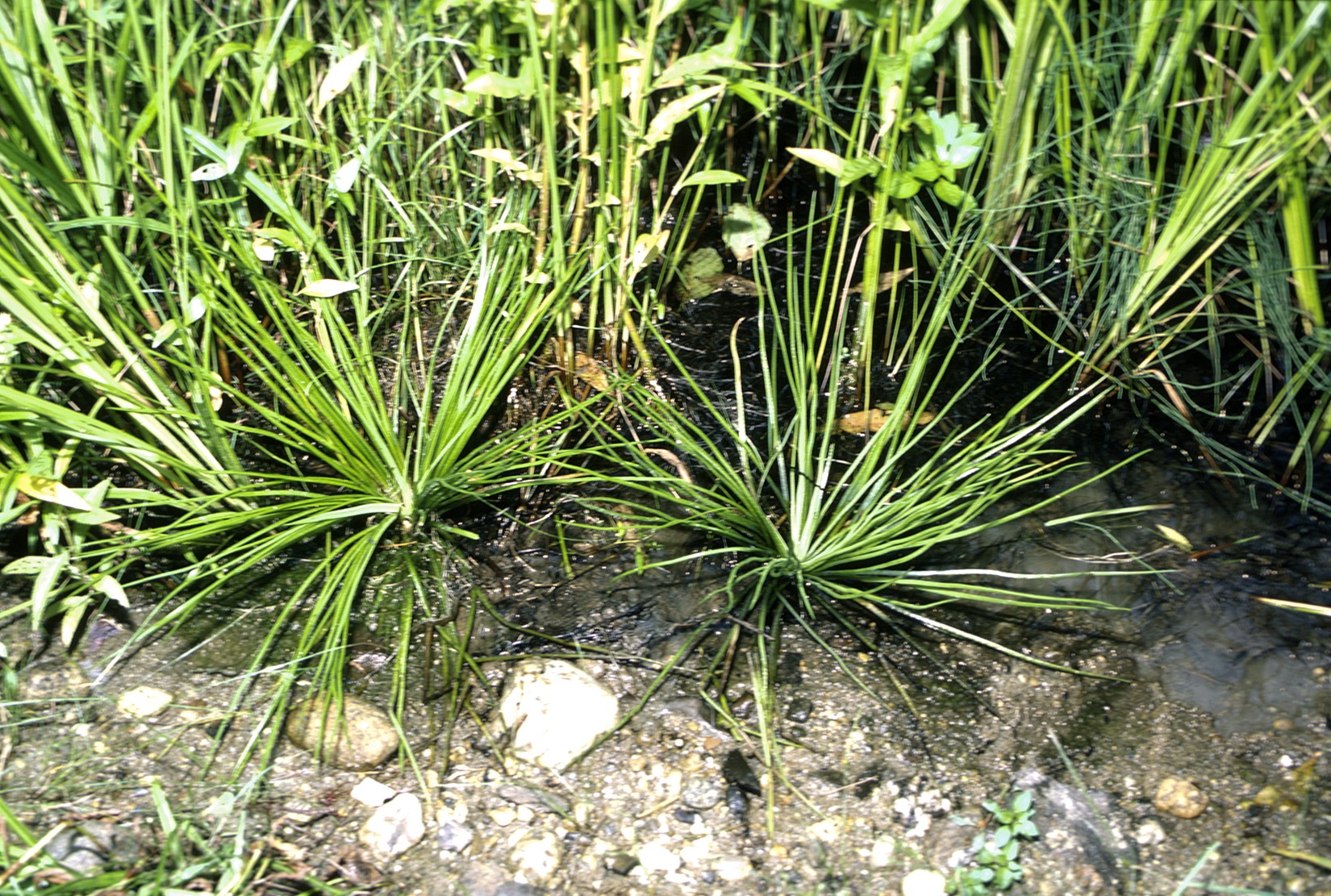Isoetales
See quillwort ( Isoetes lacustris )
The Brachsenkrautartigen ( Isoetales, also Isoëtales written ) are an order of Bärlapppflanzen. The only living species are the Brachsenkräuter ( Isoetes ). Fossil order since Devon is known.
Features
The representatives are nearly herbaceous plants. The main differences to the related systems is the construction of Rhizomorphs constructed here bilaterally. The leaves have a ligule. The sporophylls are grouped together at the shoot axis in a fertile region. They are heterosporous.
System
In addition to the single extant genus of extinct Brachsenkräuter following forms to the Isoetales be counted:
- Clevelandodendron ohioense ( Upper Devonian )
- Wexfordia hookense (uppermost Famennian )
- Otzinachsonia beerboweri ( Famennian )
- Chaloneria cormosa ( Carboniferous)
- Porostrobus (cones from the Carboniferous, possibly belonging Chaloneria )
- Sporangiostrobus ( Carboniferous)
- Nathorstiana (chalk)
- Nathorstianella (chalk)
- Isoetites ( Triassic to Cretaceous )
Some authors summarize all Bärlapp groups together with rhizomorphs in the order Isoetales, which then also includes the families of Lepidodendrales.
Fossil history
Fossil are the Isoetales known since the Devonian. This is the thesis that Isoetes has developed in a reduction in number of tree-shaped Bärlapppflanzen, no longer tenable. The discussed transitional forms Pleuromeia and Nathorstiana are significantly younger than the oldest Isoetales.
Fossils, which already strongly resemble the recent Brachsenkräutern are already known from the Triassic and are managed as Isoetites. A small plant with up to 7 cm long leaves from the Triassic of China is as Isoetes ermayinensis in the extant genus of Brachsenkräuter ( Isoetes ) provided.
Documents
- Thomas N. Taylor, Edith L. Taylor, Michael Krings: Paleobotany. The Biology and Evolution of Fossil Plants. Second Edition, Academic Press 2009, ISBN 978-0-12-373972-8, pp. 320-325.










